At some point in our lives, we experience pain. For some of us that pain goes away, but for some people the pain lingers and becomes chronic pain. Chronic pain is debilitating and the typical approach to suppress pain doesn’t address the root of the issue. It’s time to look at different options for pain so I’ve asked my guest Dr. Joe Tatta to come on today’s podcast to talk about pain and how to finally have some relief.
Dr. Joe Tatta is a doctor of physical therapy, board certified nutrition specialist and functional medicine practitioner who specializes in treating persistent pain and lifestyle-related musculoskeletal, metabolic and autoimmune health issues. His mission is to create a new paradigm around treating persistent pain and reverse our global pain epidemic. He is the creator of the Healing Pain Online Summit and the host of The Healing Pain Podcast designed to broaden the conversation around natural strategies toward solving persistent pain. Dr. Tatta is the author of the best selling book Heal Your Pain Now; A Revolutionary Program to Reset Your Brain and Body for a Pain-Free Life . He is currently in private practice and also provides Online Health Consulting to help people achieve a pain-free life free from chronic disease.
In today’s interview, Dr. Joe Tatta explains myths around pain and a different approach to healing your pain.
So please enjoy this interview…
Listen here!
Learn more about Joe Tatta by visiting his website here.
Take Joe Tatta’s Pain Quiz here.
Watch the live webinar with Joe Tatta here.
Get Joe Tatta’s book here.
Sign up for the Healing Pain Online Program.
If you have not done so already, I highly recommend that you get your customized skin profile at here. It’s free and based upon your answers, it will give you great tips for glowing skin and vibrant health.
Also don’t miss out on all of the latest tips to get glowing healthy skin from the inside and out, be sure to follow me on Facebook, Instagram, Youtube and Twitter. And join the conversation!
Thank you and we’ll see you next time.
TRANSCRIPTION
| Trevor: | Hi, there. I’m Dr. Trevor Cates. Welcome to The Spa Dr. Podcast. At some point in our lives, we experience pain. For some of us, that pain goes away, but for some people, the pain lingers and becomes chronic pain. |
| Chronic pain is debilitating, and the typical approach is suppressing pain does not address the root cause of the issue. It’s time to look at different options for pain, so I’ve asked my guest, Dr. Joe Tatta to come on today’s podcast to talk about pain and how to finally have some relief. Dr. Joe is a doctor of physical therapy, board certified nutrition specialist, and functional medicine practitioner who specializes in treating persistent pain and lifestyle-related musculoskeletal, metabolic, and autoimmune health issues. His mission is to create a new paradigm around treating persistent pain and reverse our global pain epidemic. He’s creator of The Healing Pain Online Summit and the host of The Healing Pain Podcast, designed to broaden the conversation around natural strategies toward solving persistent pain. | |
| Dr. Tatta is the author of the best-selling book, ‘Heal Your Pain Now: A Revolutionary Program To Reset Your Brain and Body For A Pain-Free Life’. He is currently in private practice and also provides online health consulting to help people achieve a pain-free life from chronic disease. In today’s interview, Dr. Joe explains myths around pain and a different approach to healing your pain, so please enjoy this interview. Joe, it’s great to have you on my show. | |
| Joe: | Thanks, Dr. Cates. It’s great to be here with you today. |
| Trevor: | Yeah. Absolutely. Let’s start with your story and what led you to get to the point where you are now? |
| Joe: | Yeah. It’s a great question. As a doctor of physical therapy, pain is the number one thing that we treat and the number one complaint that patients come to me with. For me, it started with me in childhood. My mom was a nurse, and she worked the evening shift actually on the adolescent cancer floor where she took care of kids that were basically terminal with cancer. |
| This was the ’80s where kids … We didn’t have such great chemotherapy and treatments for cancer, so oftentimes, kids were very sick and were terminal. She’d take care of the house and the kids and the dog and the husband during the day, and at night, she would go to work and take care of other people’s children. I was young. I was probably somewhere around eight or nine years old, and I really held her in this high esteem. | |
| She was kind of the kingpin of the family so to speak. I think as all of us know who work in healthcare, working the night shift can be tough and working with kids who were terminal can be tough, and over time, she got really burnt out. Today, we probably would call it ‘Adrenal fatigue’. Back then, we just called it ‘Burnout’ or other types of words. I watched her go from this really strong caregiver to everyone else to someone who needed basically a break and how to learn … | |
| She had to learn on her own how to heal herself, so she left her evening shift at the hospital and took a different job and slowly learned how to heal her body naturally. That was really the first stake in the ground of what made me interested in helping people, obviously helping people with pain. My mom had awful digestive issues. She had headaches. She bounced back and forth between anxiety and depression. | |
| She had chronic back pain, so she had a bunch of things, but I really watched her turn herself around naturally without drugs which made me want to pursue a career where I could do the same with people. That’s probably the biggest stake in the ground of how I started doing this. The other thing is I was a competitive gymnast, so being into health and fitness and exercise was always a passion of mine, so it was a perfect blend to pursue physical therapy and help people with chronic pain. | |
| Trevor: | Great. All right. Thanks for sharing that with us. Let’s talk about pain, what it is, and there are a lot of myths around pain, so let’s delve into some of that. What exactly is pain? |
| Joe: | Yeah. Pain is a huge topic, so I’ll give you a quick little framework and so your tribe can understand pain on a deeper level. First, pain is a sign of protection. That’s the first and foremost thing that’s pretty simple for people to understand that pain means protection. When you have acute pain like if you fall and scrape your knee or you sprained an ankle or you break an arm, that’s obviously acute pain, and your body has a natural healing process to heal your injury, and with that, pain typically goes away. |
| Now, as long as you have a healthy immune system, you will heal from any kind of injury within probably about three to four months max. Four months is really maximum. The inflammatory process that is necessary for healing only takes about three months, and then your tissue is healed, and your pain should go away. Your swelling would go away. The redness goes away, all the things that we know that are involved in the inflammatory process. | |
| When we look at chronic pain, chronic pain is defined as pain that persists longer than four months. What’s really interesting about chronic pain is that it’s pain that persists beyond the normal healing time of tissue, so if the tissue is not the cause of the pain, then we have to start saying, “What is the cause of the pain?” The truth is the longer you’ve had chronic pain for, the more we look toward the central nervous system, the brain as being the thing that’s turning pain on if you will. That’s the quick framework about the difference between acute pain versus chronic pain. I think we all know that you can have a persistent inflammatory state obviously if you have something like an autoimmune disease, but many people don’t have an autoimmune disease, who don’t have inflammation in their body, but pain is persisting, so chronic pain really is an output of the brain, not an input from the tissues. | |
| Trevor: | Okay. All right. Yeah. Certainly, pain is a sign that something out of balance in the body, and I know that a lot of people are quick to just cover up the pain and not really try and figure out what the root cause, what’s really going on behind that. People will take pain medications or just an Ibuprofen and people are quick to do that, but it can represent something much greater that we need to take a look at. Right? |
| Joe: | That’s correct. We have about a hundred million Americans who struggle with chronic pain. It’s our largest chronic disease more than heart disease, diabetes or cancer combined. Historically, we’ve looked at pain as a symptom where it’s just something that someone reports or complains about when they come see a healthcare practitioner, but the interesting thing about chronic pain is that the changes we see in the brain point toward chronic pain to be an actual disease in and of itself. The brain and pain as I talk about in my book, the structure of the brain as well as the function of the brain changes when someone has chronic pain. |
| Trevor: | Interesting. Okay. Yeah. Tell us more about that. How does that change? |
| Joe: | Your brain is really interesting. It’s like a big satellite that takes in information at all times. In your brain, there is a map or a GPS of your entire body, so your arm is represented in your brain. Your leg is represented in your brain. Your face is represented in your brain, your hand. All parts of your body are represented in your brain. |
| The technical term for this is what’s called the ‘Homunculus’, and that homunculus is very neat and orderly. Your brain is like a filing cabinet. It’s very neat and orderly, and it likes to keep everything separate so it knows exactly where your hand is and knows exactly where your leg is, your back, your hip, all parts of your body. With chronic pain, there’s a concept called ‘Smudging’. That means the neurons that are responsible or represent your hands sometimes can become smudged or start to overlap with let’s say your shoulder or your neck, or the neurons that are responsible for your lower back start to smudge or get connected to those of your legs. | |
| Oftentimes, people will start with let’s say back pain, and all of a sudden, the pain is no longer just in their back, but it’s in their hip. It’s radiating down their leg to their foot. It’s on the other side. A lot of times, people have like pain on both sides, and historically, we thought this was to do with something called ‘Radiculopathy’, but we now know that it has to do with changes in the brain happening. The brain becomes very sensitive or hypersensitive to those parts that were maybe injured at one point and it creates pain as an output. | |
| You can start out let’s say with let’s say you pick up something heavy, let’s say a box in your garage. You injure your back muscle tissue which is very vascularized. I mean, it has a good blood supply to it. It should heal within three months. If it doesn’t, that could be chronic pain, and then if the pain starts to spread, it tells you that, “Okay. There are changes that are starting to happen on a much deeper level not just to the joints and muscles.” | |
| Trevor: | When it comes to addressing pain and relieving pain, what are some of the biggest things that you found that help relieve pain? |
| Joe: | When we talk about chronic pain in the brain, there are two things that we really need to focus on. The first is something called ‘Pain Catastrophizing’, which is a big, funny, fancy word, but that means those are the thoughts that people with chronic pain have on a daily basis, when they think to themselves, “I’ve had this pain for so long. It’s never going to go away’, or “This pain is going to be the death of me”, or “This pain prevents me from doing all sorts of activity, any activity. I can’t do anything because of this pain.” Those types of negative thoughts feed pain, so negative thoughts feed negative thoughts. |
| Part of what we do in treatment and part of what I’d talk about in my book and on my online program are ways to turn these thought patterns around and to prevent this concept of pain catastrophizing, and in doing that, it lowers cortisol which as you know can be inflammatory, and the really interesting thing about cortisol is that when it comes to chronic pain, cortisol is very good at laying down memories. Let’s say every time you sit in your chair, your back pain starts, and you think it’s because the chair is not ergonomically correct, but there could be something else associated with the chair, and your brain starts to lay down these patterns or these pathways that associate the chair with pain let’s say or a sport with pain or an exercise with pain. Cortisol and your memories and your thoughts are really connected and tied together as far as the patterns that start to develop in your brain. The other part is something that are called ‘Fear avoidance behavior’. These are just behaviors, and a lot of this is normal obviously because people are fearful of movements when they have pain, so it’s “I avoid exercise because I have pain or I avoid walking”, or “I avoid my daily activities”, or “I avoid basic normal activities like cleaning the house”, things like that. | |
| That’s where we start with the brain and pain typically. Of course, that’s not the only thing that works for pain. What works best for pain are integrated strategies, so of course we have to look at nutrition and we have to look at healthy movement as well, but the brain and pain is where the new science is, and that’s where for your tribe if there’s anyone listening who has chronic pain, this is probably the one thing that no one’s really talked about or brought up to you because obviously, so far we’ve treated pain with medications, opioids, injections, and for chronic pain, those things often don’t work because of the changes that we see in the central nervous system. | |
| Trevor: | Yeah. That’s really interesting. How does movement and exercise, how does that play a role in the relief of pain? |
| Joe: | Yeah. There are two things. Our thoughts are one that can decrease pain. The second thing is movement itself. Now, we all know that movement obviously makes your joints stronger. It makes your joints more flexible. |
| There are actually anti-inflammatory chemicals that are produced by your muscles when you exercise, so you have natural anti-inflammatories happening in a local level in the joints. You also have positive changes that start to happen in the brain if you’re doing the right amount of movement. When I say the right amount of movement, I mean movement that doesn’t turn on kind of this harm alarm in your brain, so when you turn that harm alarm on, it creates pain as the output. If you’re doing just a little bit of exercise that doesn’t cause pain, then it’s a positive signal to your brain and natural endorphins are released. If you’re doing too much exercise that causes that harm alarm to turn on, then you don’t get the endorphin release and you obviously get pain to turn on. | |
| The other really interesting thing about movement is you actually … For the worst types of pain, so those are people that have obviously fibromyalgia, Complex Regional Pain Syndrome or something called CRPS. Some people still call it ‘RSD’. For those people, we actually teach them something called ‘Graded motor imagery’, and that’s a technique where you actually teach someone to move in their brain first using imagery before they actually start to move physically let’s say in a gym or in physical therapy or in their home. | |
| Trevor: | Can you explain a bit more about that? How do you do that? You show them a picture? Is it a video or what is it? |
| Joe: | Yeah. Graded motor imagery leverages or utilizes what are called ‘Mirror neurons’. Mirror neurons turn on when you watch activities, so if you watch someone play a sport for instance, the mirror neurons are turned on. They’re actually firing in your brain as you’re watching movement. For anyone that has chronic pain, they may know this well because they may watch let’s say someone doing yoga or watching a contact sport and actually causes those mirror neurons to turn on, but for them, they’re not ready for that type of movement, so you can actually cause pain by watching activities that’s too much for you.
|
| That’s why sometimes people with chronic pain, they’ll go see a contact sport and their pain will get worse or they’ll watch a really beautiful yoga pose that involves really deep acro bending, and they’ll say, “Oh my God. How do they do that? That hurts.” In some ways, they’re actually experiencing that motion in their brain, so they’re turning on certain parts of their brain. What we do in therapy with the worst types of pain is we give them visualization exercises that start out very small where they imagine themselves doing certain movements. | |
| It could be very gentle movements. It could just be walking or touching their toes or bring a knee to their chest, and we start to leverage the power of the motor neurons. Your brain has a planning process when it comes to movement. It fires your premotor cortex first, and that’s where planning happens. Then later on, it actually fires the motor cortex which is responsible for moving your muscles and your joints. | |
| It’s a really powerful way to help those that are scared of moving or those who have found movement not to be so beneficial, but still want to obviously get back to moving because you have to move to be out of pain and you have to move to live a healthy life. | |
| Trevor: | You’re having people physically do the movements, but then also visualize doing the movements? Is that correct? |
| Joe: | Yeah. There’s actually a three-step process to it. The first step is what’s called ‘Left/Right Discrimination’. They do a series of exercises where they have to identify the left and right side of another person’s body. Typically, it’s in a magazine or on a screen because with chronic pain, the brain starts to confuse the left and right side of the body, and if you’re thinking about spinal pain, there’s no left and right side. |
| Obviously, there’s only one spine, but what gets confused is rotation or side bending. That’s first, is first, they have to identify 100% of the time which side is left or right. The second part of graded motor imagery is imagining movement in your mind, so you would imagine let’s say yourself maybe walking or doing a simple yoga pose. The last part is what’s called ‘Mirror therapy’, and this works best for pain that’s on one extremity. Let’s say you have right-handed pain. You would put your right hand in front of a mirror and move it so that it looks like actually your left hand is moving, so you’re actually tricking the brain to think that it’s moving the affected body part without actually moving it. | |
| Trevor: | That’s fascinating. Tell us some of the results that you’re seeing with your practice with this. |
| Joe: | Yeah. I mean, it’s really fascinating. Not too many people obviously practice this. This works the best for people that have had the worst kind of intense pain, those with fibromyalgia patients who they not only have pain, but they also have all sorts of weird sensations like tingling and numbness. Sometimes people report burning. |
| They report a sensation of like ants crawling on them. CRPS or Complex Regional Pain Syndrome, obviously there’s pain, but there’s also a swelling in a joint even though the injury has passed the four-month period. What’s fascinating about CRPS and oftentimes it’s like the gold standard in treatment someone with chronic pain is that not only do someone have pain, so not only is the brain producing pain as an output, but it can also produce swelling. It can also produce trophic changes, so the skin changes from normal color to either blue or black or pink color. Hair starts to grow where there shouldn’t be hair there. | |
| What we know the reason why this is happening is because the immune system and the nervous system are intimately related, so they don’t exist in their own shell. They oftentimes act together, so you have nervous system changes happening in the brain, along with different types of immune system responses. | |
| Trevor: | Wow. Okay, so you’re seeing great results with this in your practice. Are there things that people can do on their own to get started with some of these practices? |
| Joe: | There is a really simple one if you want to test yourself is if you have chronic pain, let’s say you have chronic pain in one hand or one leg is pick up … Go to the store and purchase like a yoga magazine or a Runner’s World, and let’s say you have right-sided pain. Circle every right … Let’s say you have right hand pain. Circle every right hand that you see in the magazine, so you’re flipping through the magazine relatively fast, spending no more than about three seconds per page encircling every hand that you think is a right hand. |
| Then, have someone who does not have chronic pain go through it and see if you made any mistakes. If you don’t have a score of let’s say 70% or better, it means that there are some kind of changes going on in your nervous system with identifying the difference between right and left. Let’s say you have right knee pain, you can go through and try to identify every right knee. If you have hip pain, the same thing. If you have back or neck pain, what you do is you run through the magazine and you circle let’s say every time you see someone’s neck turning to the right or their back turning to the right. | |
| It’s a really quick way to identify left or right. It doesn’t cost anything obviously. You can test yourself. If you have fibromyalgia or very long-term chronic pain of any kind, it could be really eye-opening to see some of the changes that have happened. | |
| Trevor: | Wow. Interesting. Is your experience then that people with the right-sided pain, they miss a lot of those? For example, like they miss the right knee. They won’t get them all? |
| Joe: | Yeah. They start to circle left knees, and it’s not, so I really put the picture in front of them. I say, “Great. Take a deep breath and take a look at it, and take a couple of seconds”. Then, usually after about 10 seconds or so, they say, “Oh, you’re right. It’s not a right knee. It’s actually a left knee.” |
| Time is a factor there obviously. If you spend a lot of time looking at the picture, eventually, you’ll get it. That’s why if you’re doing this type of exercise, only spend about three seconds per page identifying right versus left. | |
| Trevor: | I mean, it’s a great exercise. Let’s talk about nutrition now too. How does nutrition play a role in pain and what about is there a diet that really works well for people with pain? |
| Joe: | Yeah. Nutrition wise, obviously out of the hundred million people that have chronic pain, about 50 million of those have an autoimmune disease, so healing your gut and lowering inflammation through nutrition is really key. There are also of course, as you know, Dr. Cates other inflammatory conditions like pre-diabetes, diabetes, obesity in and of itself is an inflammatory condition, so it’s really important to lower your inflammation with healthy food and healthy nutritional choices, some healthy supplements. Healing the gut is essential. All my patients if they’re getting a nutritional intervention, the first three interventions they get or receive from me is a gluten-free diet, a dairy-free diet, and a sugar-free diet. |
| Those are the first three that I find really work really fast to alleviate someone’s pain. As far as diets go, each of us are biochemically individual, so we want to look at diet for the actual person. Look. If your diet is a 100% Western American diet, then let’s just work first on getting some good whole foods in you that doesn’t come in a box, a can or made by man, and that will heal a lot of things right there, but ultimately, most of my patients winds up on a gut-healing protocol which helps I would say probably about 70% of them. Those that fail a gut-healing protocol, I’ll take them on a modified ketogenic protocol for about three weeks and see how they do. What’s really interesting about a ketogenic diet is that it points back to the brain. | |
| There’s a neurotransmitter in the brain called ‘Glutamate’ which is an excitatory neurotransmitter. Ketone bodies tend to downregulate glutamate and upregulate GABA, and GABA is an inhibitory neurotransmitter which makes your nervous system feel nice and relaxed and quiet. That’s the main benefit behind a ketogenic diet. We’re really learning a lot more as far as chronic pain when it comes to a ketogenic diet. The other thing about a ketogenic diet that you have to also take into consideration at, it’s very low carbohydrates, so it’s very powerful for regulating insulin and blood sugar. | |
| Trevor: | Yeah. Absolutely. You’re talking about in certain people with pain that healing the gut is really important for that. I work a lot with skin issues, and what I’ve noticed is that if people have skin issues and chronic pain together, that’s a really good indication that there’s something going on with the gut there that needs to be addressed. Microbiome imbalances, leaky gut, those kinds of things really need to be addressed. If people have that combination, it’s usually creating so much inflammation from the gut issues that it’s showing up as pain, and then also shows up on the skin. |
| Joe: | Yeah. That’s right. I mean, if we look at our autoimmune patients, most of them have some kind of skin issue as well which is always interesting to me because I had my own skin issue that I healed myself from naturally, and that really came from healing my gut and using some key supplements. Lupus patients are probably the classic for that. Many of them have skin issues, especially hypersensitivity to the sun, but it’s not just hypersensitivity to the sun. It could be many other things that caused their skin to react. |
| Trevor: | Yeah. Absolutely. I think you’re right too about when it comes to diet to their different diets that work for people and depending upon with some of the root causes are and things. What about supplements for pain? |
| Joe: | There’s a couple of key supplements I start everyone out on. First, you have to have some good tests run, but I really recommend obviously a Vitamin D test. Low Vitamin D levels have been linked to almost every chronic pain condition out there, migraines, back pain, neck pain, joint pain, osteoarthritis, rheumatoid arthritis, all of the autoimmune diseases, so make sure your Vitamin D levels are around 50. That’s the sweet spot I find when people start to feel better. After that, a good quality fish oil where they’re taking about 3,000 milligrams per day is essential. |
| Curcumin would be my third. A good quality Curcumin that is not in powdered form where it’s actually suspended in some kind of oil either MCT oil or some turmeric oil because it gets absorbed through the gut better when it’s suspended in oil. Curcumin itself is lipophilic so it likes fat. That’s how it gets absorbed through the gut through the lacteal. After that, proteolytic enzymes are probably the final one that help to break down that stickiness of inflammation that happens throughout the body. Inflammation, the body oftentimes has a stickiness to it where proteolytic enzymes can break that up. Just don’t take your enzymes with food because it’ll break down your food. | |
| Trevor: | When people are looking for the proteolytic enzymes, what should they be looking for? |
| Joe: | There’s a couple of different … A blend first of all, not just one. I’ve had some patients take papain, only papain, and they tend to overdose on it. It can actually irritate their G.I. systems, so there are blends out there. Look for a blend of different enzymes that are in form of those. |
| That tends to work best because inflammation is a little bit different in you as an individual. It’s different in each of our bodies, so a blend tends to work best for that type of inflammation. | |
| Trevor: | Let’s talk some more about the ketogenic diet and pain and why that seems to help people. First of all, let’s back up for a minute and explain to people what you mean by a ketogenic diet for people who aren’t familiar with that. |
| Joe: | Sure. That’s a great question. Ketogenic diet is a very high fat diet, low carbohydrate, moderate protein, so in looking at your calorie intake, your calories are about 65 to 70% fat, about 20% protein, and the rest would be carbohydrates and there are obviously carbohydrates that tend to be more fibrous and slowly absorbed. The type of ketogenic that I use with patients is a dairy-free ketogenic diet. Oftentimes, when I talk about a ketogenic diet, people think back to the Atkins diet where people did a lot of dairy products and cheese sauces. |
| Cheese is a big one for people when they’re looking at diet. The ketogenic diet that I talk about in my book, ‘Heal Your Pain Now’ is a dairy-free diet, so you’re getting healthy fats from meat, from fish, from some nuts and seeds, from olive oil, from coconut oil, from macadamia nut oil, from avocado oil, from whole avocados, from whole olives, all the healthy fats basically. That’s the big distinction. I had people come to me on ketogenic diets where they are still on dairy and they love it. Obviously, dairy tastes good to some people, but as you know, dairy is awful for your skin and it really can cause inflammation throughout your body on many different levels, so it’s a dairy-free diet that I recommend. | |
| That’s the framework for a ketogenic diet if you’re looking into it. There are a couple other reasons why a ketogenic diet does help with pain. In your body when you’re in ketosis, it’s like the mimicking of a fasting state in your body. When you have a fasting state in your body, there’s a hormetic signal that’s turned on, and hormesis means like a positive signal your body upregulates the immune system. Oftentimes, that can help with pain basically, so upregulating that hormetic effect is really powerful. | |
| The other thing with the ketogenic diet is that oftentimes, people don’t need as much food because it’s such high fat quantity that they don’t eat as much. They feel satiated much faster, so in some way, they limit their calories just naturally. | |
| Trevor: | Okay. I think that it’s certainly something that people can look into and see if a ketogenic diet makes sense for them. How long do you usually recommend people be on a ketogenic diet to get results? |
| Joe: | I start people out just on three weeks, and if they do well within three weeks, they’re welcome to stay on it for about a month. I don’t keep people in ketosis. I often cycle them back to a whole food diet where they have learned which foods are inflammatory for them, which foods are not inflammatory. If the ketogenic diet does work for them and they find it beneficial, then I recommend they give ketosis a shot about twice a year for about three weeks as a way to check in with their own body, to check in with their own inflammation, check in with their own pain. A ketogenic diet really is not something obviously if you have Type 1 diabetes, this is not for you. |
| If you are in acute adrenal fatigue, this is not for you. If you have acute thyroid issues that are uncontrolled or you’re in the process of controlling them, it’s not really for you. The only reason why I mentioned that is because a ketogenic diet puts a little bit of a stress on the body, and that little stress, that hormetic effect can be positive. Sometimes there’s an increase in cortisol, and cortisol is very good or high levels of cortisol are very good at blocking TSH and T4 in the thyroid so you have to be careful with ketosis if you have thyroid issues. | |
| Trevor: | It seems like you’re mentioning dairy is a big problem food for inflammation for pain, and certainly, and you mentioned it being a bad food for skin, being one of the trouble foods for skin. What are some of the other foods because I imagine that they’re probably similar? I mean, would you say sugar would be another big one for pain? I mean, I would imagine a lot of these foods are the same like gluten, and sugar, dairy, that a lot of the same top foods that we avoid for skin issues would be the same for pain. |
| Joe: | Yeah. It’s really interesting. The five foods that I talk about in the gut-healing chapter of my book, ‘Heal Your Pain Now’, gluten, dairy, sugar which you already spoke about. The fourth one that I recommend people eliminating are eggs. The fifth one are actually GMOs. |
| I recommend people really eliminate GMOs from their diet if they can, and if you can’t eliminate all GMOs, obviously that can be a challenge for people, then soy and corn or the top two that I say, “Okay. If you can’t do everything non-GMO, then you absolutely have to do at least an elimination of soy and corn” because the crop of those types of grains, because corn is a grain and legumes are mostly GMO-produced. If you can find a good quality organic soy, I’d be probably shocked, and most people still have issues with it as far as intolerances. | |
| Trevor: | Yeah. I certainly do agree that those foods can be problem foods for skin, the eggs and the corn, and soy. Can you explain to the audience why genetically modified foods, the GMOs are particularly bad for the gut? |
| Joe: | Yeah. For me in the work I do as far as healing the gut, I really look at … Of course, these foods, we don’t know a lot about them. We still don’t know what an engineered food does to the body, the genetic make-up of the body, so we’re learning more about that, so I take the precautionary principle like I’d like to know more about my food that you’re playing with and toying with in the lab before I start to eat it because I’m not really quite sure it’s exactly food, but the biggest thing is something called ‘Bt Toxin’. That’s a toxin that is genetically modified into the food to basically kill insects, and the way it does that is when the insect eats it, so if it’s causing leaky gut in the insect, we know it’s causing leaky gut in humans when they eat it. |
| That’s why I really recommend people staying away from GMOs 100% if they can because there are a lot of things that we don’t even know about as far as being health practitioners, nutritionists, functional medicine practitioners. We’re not quite sure what they’re putting in the food because they’re not required to tell us. | |
| Trevor: | Yeah. I know. It’s a scary thought, so choosing non-GMO, organic is going to be the way to go. Okay. Joe, thank you for all the information that you’ve shared. Tell everyone how they can learn more about what you’re doing, about your book, and we’ll certainly have links to all of that on the website. |
| Joe: | Yeah. Thanks, Dr. Cates. It’s been great chatting with you. You can learn more about me on my website at Drjoetatta.com. That’s Drjoetatta.com. |
| My book is called ‘Heal Your Pain Now: The Revolutionary Program To Reset Your Brain and Body For A Pain-Free Life’. It’s available in every bookstore and every online retailer. If you’re interested in learning more about exactly what type of pain you have, I have a great quiz for you. It’s called ‘The Pain Quiz’. If you just go to ‘Thepainquiz.com’, you can take that and I’ll send you lots of good free information about pain and how to heal it naturally. | |
| Trevor: | Excellent. That sounds like a great quiz. I have my own quiz, so I know how valuable those are. People love taking quizzes, so thanks for creating that. I also know how much work they are to create, so thank you for creating that tool. |
| Joe: | Yeah |
| Trevor: | A very valuable tool for everyone to find out more about how to get to the issues behind the pain and finally get some relief. Joe, good luck with your book and thank you for coming on today and so appreciate what you’re doing to help relieve people from pain. |
| Joe: | Great. Thanks so much, Dr. Cates. It’s great being here with you. |
| Trevor: | I hope you enjoyed the interview today with Dr. Joe. To learn more about him, you can visit my website, Thespadr.com. Go to the podcast page with his interview and you’ll find all the information and links there. While you’re there, I invite you to join The Spa Dr. Community on my website or subscribe to the podcast on iTunes so you don’t miss any of our upcoming shows. Also, if you haven’t gotten your customized skin profile, you can go to Theskinquiz.com, and it’s free. |
| It only takes a few moments to answer the questions. You get your own customized skin report, find out your skin type, and what root causes might be holding you back from having clear, glowing skin. Also, don’t miss out on the latest tips for glowing skin and vibrant health. Join me on social media on Facebook, Pinterest, Instagram, Twitter, YouTube and join the conversation. Thank you, and I’ll see you next time on The Spa Dr. Podcast. |
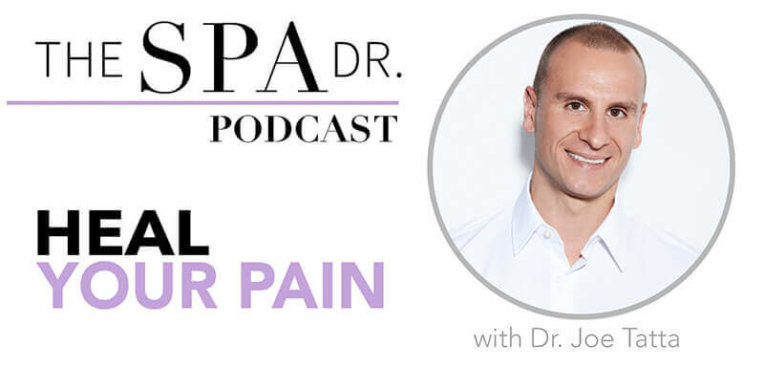

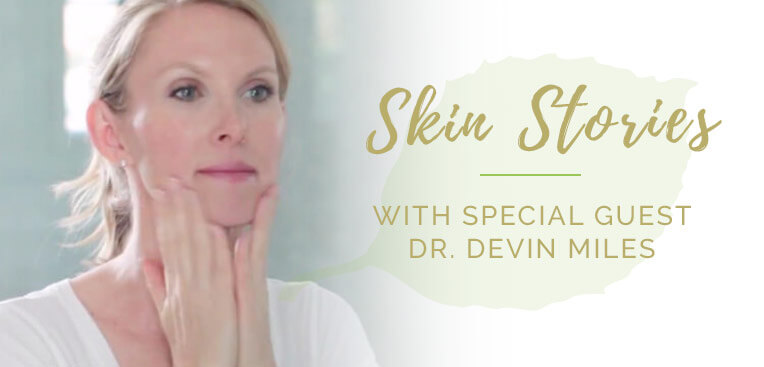
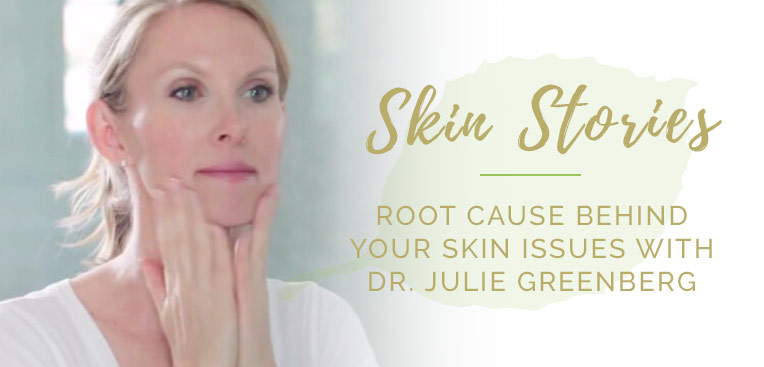
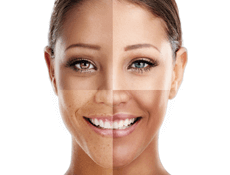
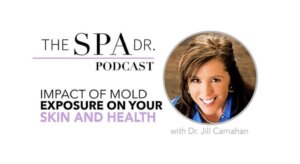
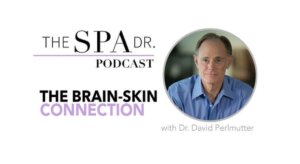
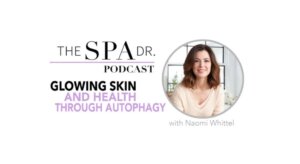
Reader Interactions